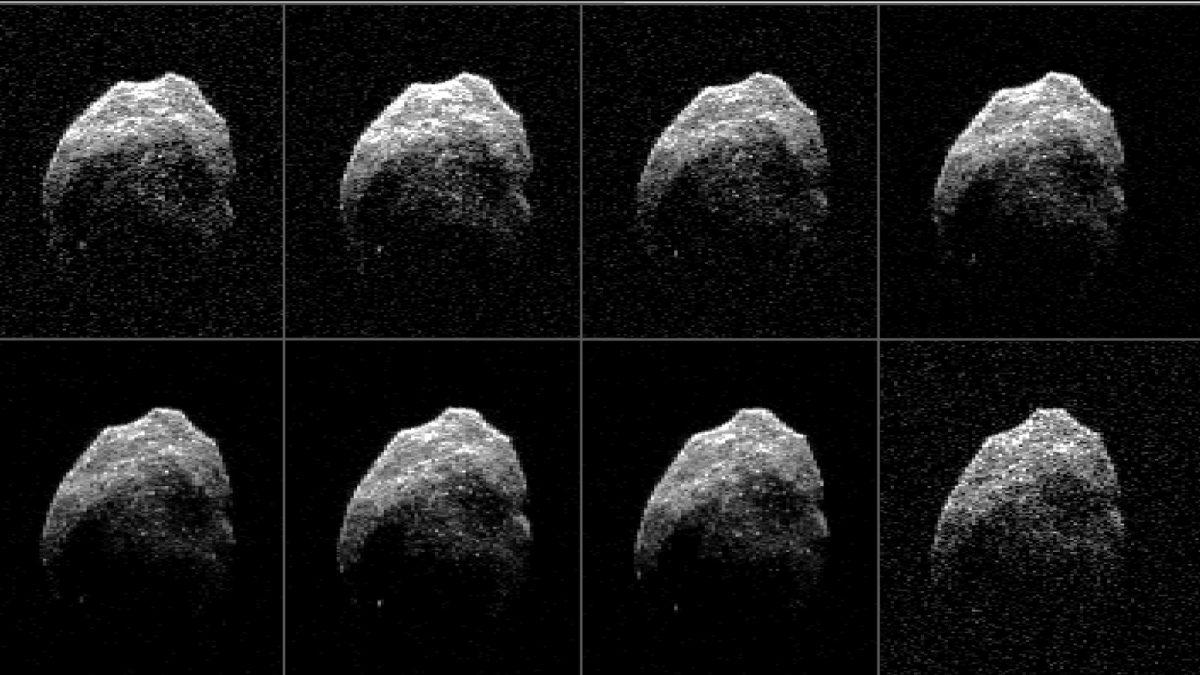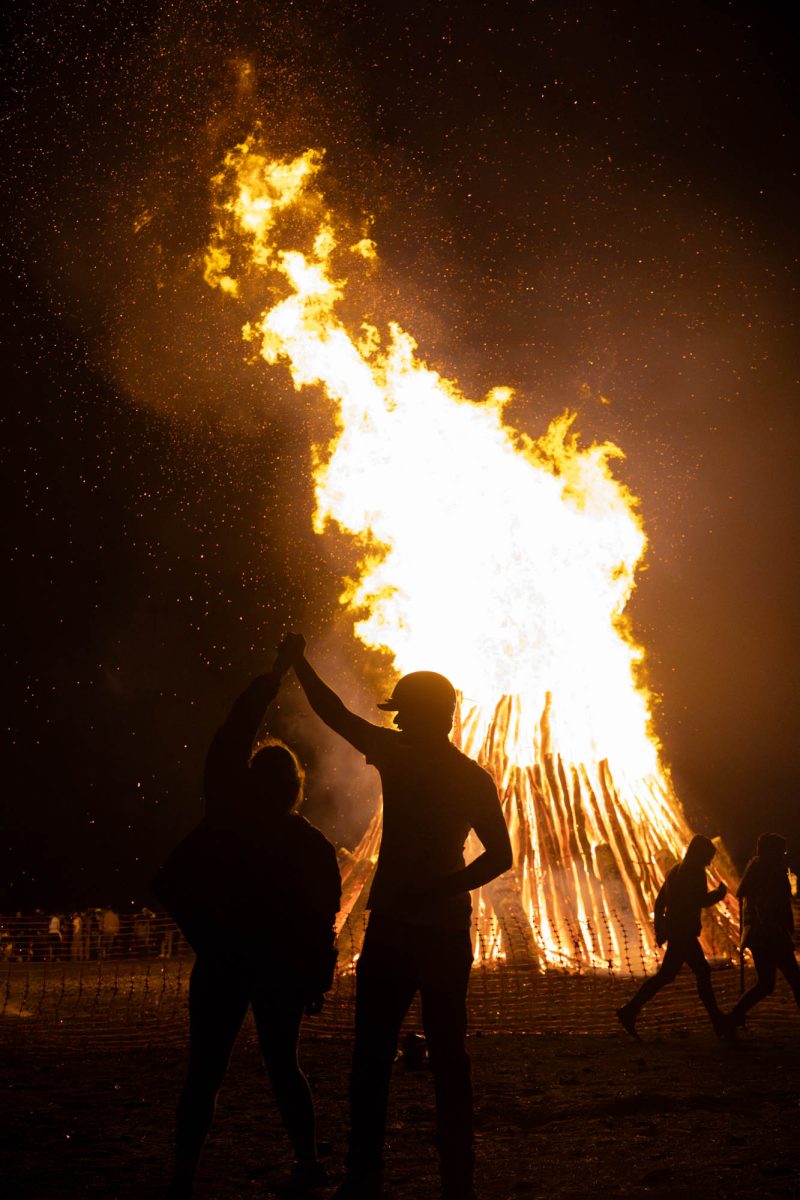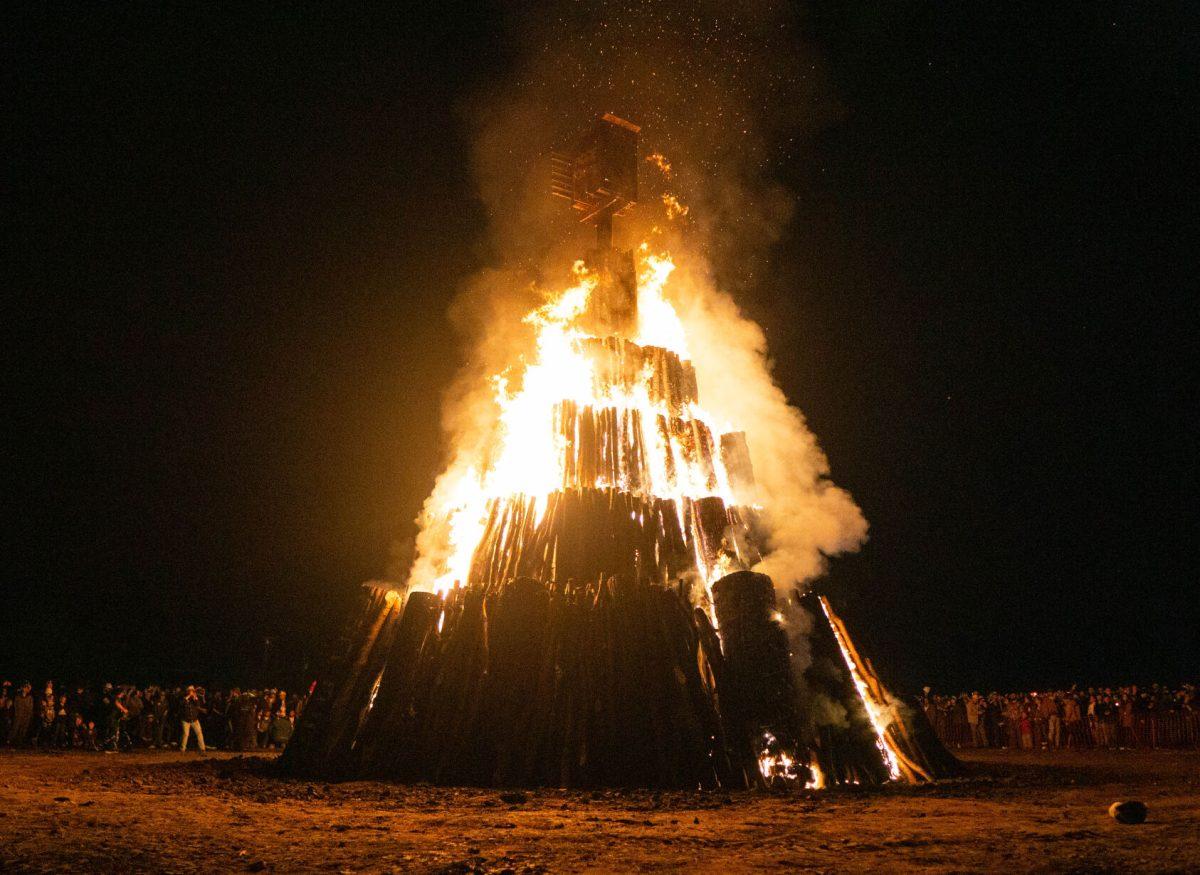A skull-shaped asteroid is passing by Earth again just a short while after Halloween.
The asteroid is named 2015 TB145, but it has been called the ‘Halloween asteroid’ because of the time it came into view three years ago. It was first observed in October of 2015, and will be passing by Earth again in early November.
Paul Chodas, manager of NASA’s Jet Propulsion Laboratory Center for Near Earth Object Studies, told CNN that this time the asteroid will not come close enough to appear “any larger than a dot of light.”
Postdoctoral researcher in physics and astronomy Peter Brown said getting people excited and thinking about astronomy is important, and he -believes the skull-shaped asteroid does just that. Although the asteroid won’t pass as close to Earth as it did in 2015, it’s still an interesting occurrence, Brown said.
According to Brown, this particular asteroid coming into view at this time is completely random. If the asteroid came around any other time, it probably would not have been interpreted as skull shaped.
“Sometimes our eyes tend to find faces in objects because our brains are tuned to find faces, so we happen to do that in nature, like the skull-shaped asteroid,” Brown said.
Astronomy professor Darren DePoy said that while he never heard of a skull-shaped asteroid before this one, asteroids tend to come in all shapes and sizes.
“Asteroids are material left over from the formation of the solar system that did not incorporate into planets,” DePoy said. “They generally formed early in the history of the solar system from material in the disk of material that was around the Sun as it collapsed to become a star.”
According to DePoy, asteroids are some of the oldest objects in the solar system that are in a primordial state, meaning still very little has happened to them over the past five billion years.
“We know a fair amount about asteroids because they occasionally bump into each other and the resulting fragments can be found here on Earth when they fall as meteors,” DePoy said. “Several asteroids are large enough to be officially categorized as dwarf planets, and at least one NASA mission has orbited two of them.”
Astronomy graduate student Yaswant Devarakonda said the shapes and sizes of asteroids depend a lot on the time they are from and how they form. Other factors such as an asteroid’s significant heating, collisions with other asteroids and radiation play a part as well.
“From what I’ve gathered, the most likely explanation for the skull-shaped asteroid is based off the asteroid’s highly eccentric orbit,” Devarakonda said. “Asteroids have more circular orbits, while comets have more centric elliptic orbits, so it is believed that this particular asteroid used to be a comet that ran out of ice and dust.”
Devarakonda said without the ice and dust that is usually on the comet shell, there is only a rocky core left. This could potentially leave holes in the asteroid.
“If those holes were where all the ice, gas and dust was located, then once it is all blown off we’re left with the scarred surface of the asteroid,” Devarakonda said. “The end result would be the coincidental skull- shaped asteroid visiting near Halloween this year.”
Aggie astronomers weigh in on ‘Halloween asteroid’
October 19, 2018
Photo by Creative Commons
2015 TB145 was discovered three years ago but will not appear near Earth again until 2080.
0
Donate to The Battalion
$810
$3500
Contributed
Our Goal
Your donation will support the student journalists of Texas A&M University - College Station. Your contribution will allow us to purchase equipment and cover our annual website hosting costs, in addition to paying freelance staffers for their work, travel costs for coverage and more!










